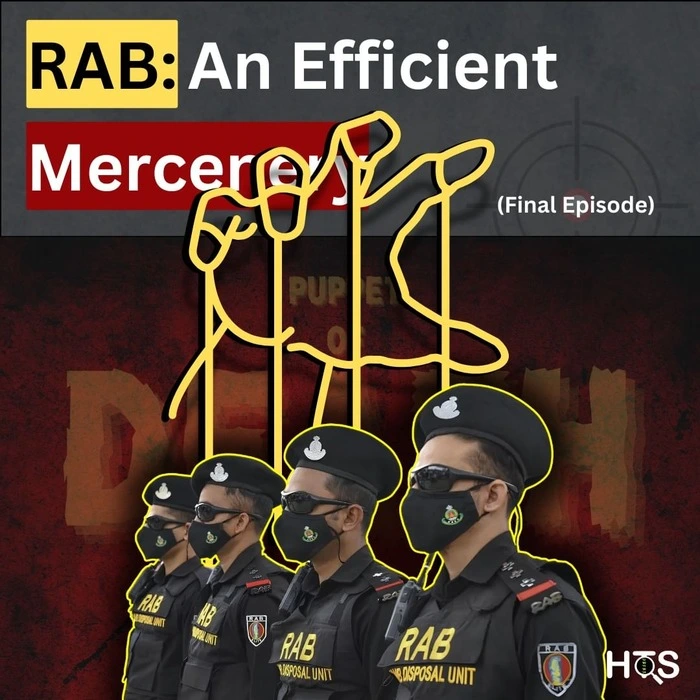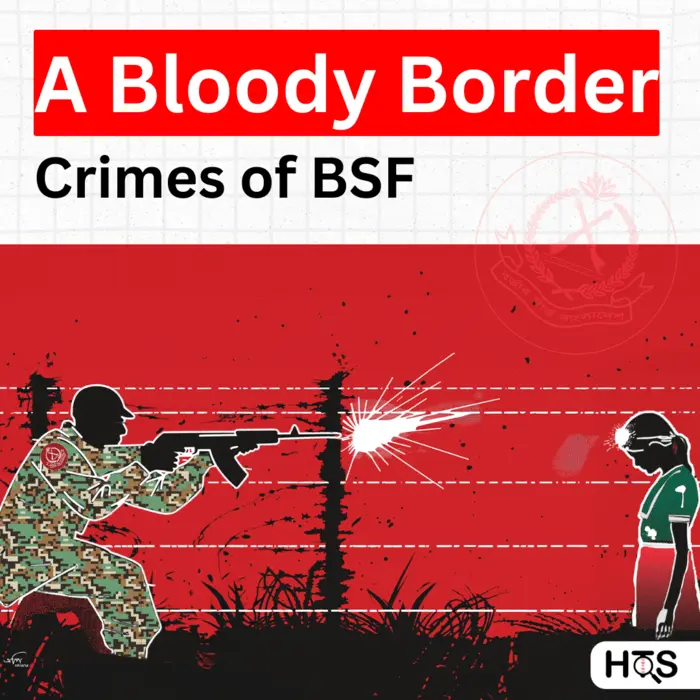BDR Mutiny: Indian Affairs

The BDR revolt in 2009. Who did it? Who was behind it? Why did it happen?
All these questions were given vague answers, and information regarding it was hidden from the mass public, and coverage regarding this was censored.
The BDR Revolt happened when a section of BDR soldiers took over the headquarters of BDR in Pilkhana, killing BDR director-general Shakil Ahmed along with 56 army officers and 17 civilians. They also fired on civilians, held many of their officers and their families hostage, vandalized property, and looted valuables. The whole revolt spread to other cities and towns and eventually ended when the mutineers surrendered arms and released hostages after negotiating with the then Prime Minister Sheikh Hasina.
On the surface, the most logical explanation for the mutiny would be the genuine discontent of BDR soldiers. This would explain the numerous demands they put forward during negotiations. Key grievances included low pay, non-payment of promised daily allowances for extra duties rendered, less annual leave compared to the army, and a denial of lucrative UN peacekeeping services. Although a BDR platoon worked with the Bangladesh Police on a UN mission in 2006, future BDR collaboration with the UN was denied by the army, which caused resentment among BDR soldiers. Ration entitlement was another issue that further antagonized the BDR, who received three months of entitlement compared to twelve months of the army. What appeared to infuriate BDR soldiers the most was army control. In 2007, the CTG launched ‘Operation Dal-Bhaat’ in an effort to curtail soaring food prices. As a result, the BDR sold essential food items to the public at reasonable prices and was allowed to keep the profits. Dal-Bhaat ran for about a year and a half before it was wrapped up in September 2008. By late 2008, the majority of BDR soldiers came to believe that their superiors had embezzled profits from Dal-Bhaat as well as their share of monies from election duties. However, this line of reasoning has met a lot of skepticism.
On 5 November 2013, Dhaka Metropolitan Sessions Court sentenced 152 people to death and 161 to life imprisonment; another 256 people received sentences between three and ten years for their involvement in the mutiny. The court also acquitted 277 people who had been charged. The trials were declared unfair by various international organizations, including Humans Right Watch and Amnesty International. Legal experts commented that the sentencing was unprecedented in the recent history of South Asia.
“After the sepoy revolution in 1857, a few thousand sepoys were hanged for mutiny during the British period. Since then such sentencing has not been seen in this subcontinent” – Shahdeen Malik, Jurist
According to an excerpt from India’s Near East: A New History by Avinash Paliwal Indian involvement was pretty evident in suppressing the BDR revolt.
The worst massacre of army officers in Bangladeshi history was underway. Shortly after the killings began, Hasina called her closest ally in New Delhi, top Congress leader and recently appointed finance minister Pranab Mukherjee. Upon hearing what was going on, Mukherjee promised “to be responsive.” The “SOS” from Dhaka triggered the mobilization of paratroopers and prompted foreign secretary Shivshankar Menon to urgently engage with American, British, Japanese, and Chinese envoys to lobby support for Hasina.
Maj Kamaldeep Singh Sandhu of the 6th Battalion of the Parachute Regiment was on “spearhead” duties that day. It was 5 pm on 26 February 2009 when the orders came. An emergency code had been activated, and the vanguard companies of the paratrooper’s spearhead were to mobilize. A battalion strength strike force alerts 24/7 for emergency deployments; the spearhead is central to India’s power projection. A similar emergency code was activated and revoked the night before. But when the order came again, accompanied by “five or six” IL-76 aircraft and AN-32s, Sandhu knew something big was happening.
Indian troops were also stationed at Kalaikunda Air Force Station in West Bengal numbering at about 1000 ready to intervene if the orders came from New Delhi. New Delhi, on the other hand, was awaiting the request from Hasina to act.
India also wanted to intervene militarily on February 27 but decided not to since they wanted to see how the mutiny would play out.
The pressure on General Moeen was huge to act on the mutineers after the violence and murder of the director general, but he was hesitant to act as it would potentially put the life of the PM in danger. However, there was another reason he probably didn’t act.
“I was told by those who were closer to power that Gen Moeen was asked not to use force otherwise (Indian) paratroopers will drop in Dhaka within one hour”* – Touhid Hussain, then Bangladesh’s foreign secretary.
India was not bluffing. “It was all real … we would’ve intervened if required” confirms a top Indian official who was part of foreign and security decision-making.
India eventually never landed troops but the mere action of giving out threats and being ready to go all out if the situation got worse gave the military enough fear to never attempt a coup again if things in the country got unstable and helped the army to be under firm control of Hasina.
But why was India so eager to help Hasina suppress this mutiny? The suppressing of this mutiny would have had long lasting consequences in the long run including removing any future chance of a mutiny done by the army to counter this coup as they would always feel a threat that whatever plans they made against the government, Hasina would just call upon India’s assistance to stop any potential coup from succeeding.
India didn’t go through with military involvement in the long run because they figured out two possibilities could happen.
Hasina is put in power but forever is condemned as an Indian stooge, which would just mean her regime gets toppled sooner or later.
15 years later since this incident, the Hasina government is gone, but due to different reasons, and her allegations of being an Indian stooge remain strong due to her close relationship with India even after her fall.
India risks being seen as destroying a nation’s sovereignty, and this negatively impacts their relationship with their neighbors even more.
The mid-2000’s were a chaotic time for politics in South Asia and especially India’s foreign relations with other countries. Pakistan and India relations had deteriorated way more than before, despite some positive surges of optimism through discussions. Sri Lanka was going through its civil war, and Bangladesh was being led by the BNP-Jamaat coalition whose foreign policy was firmly anti-India. One of the sagas during this whole incident was the 10 truck incident of Lutfozzaman Babar. Babar planned to send ammunition from China to Assamese freedom fighters known as the ULFA to cut off the chicken’s neck. While this did not succeed, the mere fact that things like this were attempted made India very wary of a BNP led government in the future.
Pakistani involvement was being suspected by India or being pushed in their media outlets especially connections to ISI. The theory was being promoted by CNN-IBN and Kolkata based newspaper “Daily Anandabazar”. The theory was that ISI was involved with the then BNP ex MP Salahuddin Quader Chowdhury and Jaamat e Islami and staged the mutiny to destabilize the government of Bangladesh so that the war crimes trial did not take place and a more non India friendly government could take over power. The basis of this theory was that nine days before the mutiny, Pakistan President Asif Ali Zardari sent Special Envoy Zia Ispahani to Dhaka to appeal to the Bangladesh government not to open war crimes cases.
According to some ex-army officers, the death of the Director General of BDR, Major General Shakil Ahmed, was confirmed on the Indian news channel NDTV by the afternoon, while the Bangladesh Army was still trying to understand what was happening inside Pilkhana.
While military intervention did not come, the mere fear of it led the army to be silent in the long run and let this autocracy run in the country for the next 15 years. Hasina had accomplished something big for her reign to last long—she had neutralized the military, the biggest threat to her regime. To hide her involvement in this mutiny, a lot of news around the time had been censored as well which is coming to light now that her regime has ended.
Sources:
- How India helped Sheikh Hasina suppress the 2009 BDR mutiny | Dhaka Tribune
- MUTINY INVESTIGATIONS CONTINUE, FBI ARRIVES, POLITICIANS RETURN TO PARTISANSHIP | Wikileaks
- India’s Near East: A New History Book by Avinash Paliwal
- Indian media points fingers at SQ Chowdhury | BDNews24.com



